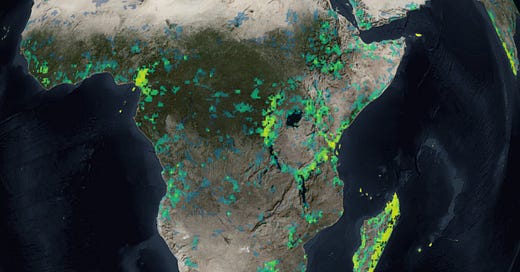If we go on destroying the planet, would it be better if we restricted ourselves to half of it? The audacious “Half-Earth” proposal has met with a lot of criticism. But is it really a bad idea?
Dear subscribers and friends,
this is another premium post in our series on the future of mankind. If you missed the previous one, you can find it here:
Thinking clearly about the problems
Today we begin with a look at the most pressing problems of our near future: what can be summarily labelled the “ecological catastrophe.”
Our environmental problems are many, and solving them will be imperative if we are to have any future on Earth. The public debate often focuses only on global warming and climate change. The detractors who don’t believe in the reality of climate change seem to be under the impression that if climate change is not real, or if it is not as severe as predicted, then everything will be all right with the Earth. Of course, the reality is different.
Earth.org identifies the 12 most pressing environmental problems of our lifetimes as:
Global warming from fossil fuels
Poor governance
Food waste
Biodiversity loss
Plastic pollution
Deforestation
Air pollution
Melting ice caps and sea level rise
Ocean acidification
Agriculture
Food and water insecurity
Fast fashion and textile waste
... and I would like to add: overfishing and the destruction of the ocean’s ecosystems; and nuclear waste, which, strangely, doesn’t get a mention in this list.
Some of the items above are, indeed, consequences of global warming; but others are entirely independent issues. Even if we didn’t have a problem with global warming, even if it was all fake, as some believe; we would still have to deal with plastic pollution, overfishing, deforestation, biodiversity loss and food and water insecurity for large parts of the world.
As philosophers, we have an obligation to promote clarity in thinking about problems, and here is one area where large parts of the world’s population are currently deluded. Especially the technological fixes to global warming, like the spraying of reflective materials into the stratosphere, are not only potentially more dangerous than global warming itself, but they also completely ignore the roots of the actual problem. And they ignore all the other problems mentioned above, which won’t get fixed even by successful sunlight dimming. Plastics, radioactive waste, depletion of crucial resources, air pollution and species extinction won’t stop because we’re spraying metallic droplets into the clouds.
So what will save us?
Biodiversity and human habitation
If you look at the list above, some of the problems are the result of a human population that has grown to occupy too much space and use too many resources, while the rest of the planet and its biosphere, that is required to recycle these resources, is constantly shrinking. Food waste, biodiversity loss, air pollution, and even plastics wouldn’t be the problems that they are if we had fewer humans, concentrated in one part of the world, with vast areas of pristine, protected nature to make up for the destruction that we cause.
Especially biodiversity depends on contiguous areas of wild nature, in which self-sustaining ecosystems can flourish. One garden patch here and one over there, separated by a highway, won’t be as effective in creating habitats as a combined area would be, with the highway on the one side of it. Some animals require huge areas of land in which they can hunt, mate and live natural lives: A single Siberian tiger female needs up to 450 km2 (170 sq miles) to live in — and males need even more than that [1]. Humpback whales travel up to 3,000 miles from their feeding grounds in the cold waters of the Polar regions, to their breeding grounds in the warmer waters of tropical regions [2].
Keep reading with a 7-day free trial
Subscribe to Daily Philosophy to keep reading this post and get 7 days of free access to the full post archives.




